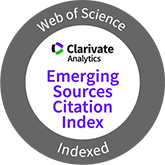Arquitectura como tecnología de construcción de la realidad social
DOI:
https://doi.org/10.3989/arq.arqt.2003.20Keywords:
Archaeology of Architecture, Landscape Archaeology, Domestic space archaeology, hill-forts, Iron-Age settlements, Galician-Roman societyAbstract
This text develops the archaeotectonic approach reflected in the poster of the same name at the 1st International Archaeology of Architecture Seminar, with a view to showing graphically the potential and applicability to archaeology of certain analyzes and methodologies developed in the interdisciplinary field of Archaeology of Architecture. Working from a specific theoretical proposal defined from post-procesual landscape archaeology, we approach the syntactic analysis of domestic space at town level as a basic instrument in defining models or patterns of spatial organization which form the basis of a sociological interpretation of social-cultural formations from the past. We provide a concrete practical example of this: the application of spatial analyzes to an extensively excavated Galician-Roman fortified town will allow us to sketch a model of spatiality present in this period, exploring the problems of stability and survival of architectonic traditions from the Iron Age along with the factor of change and rupture imposed by the Romanization of the northwest of the Iberian peninsular.
Downloads
Downloads
Published
How to Cite
Issue
Section
License
Copyright (c) 2003 Consejo Superior de Investigaciones Científicas (CSIC) - Universidad del País Vasco/Euskal Herriko Unibertsitatea (UPV/EHU)

This work is licensed under a Creative Commons Attribution 4.0 International License.
© CSIC. © UPV/EHU. Manuscripts published in both the print and online versions of this journal are the property of Consejo Superior de Investigaciones Científicas and Universidad del País Vasco/Euskal Herriko Unibertsitatea, and quoting this source is a requirement for any partial or full reproduction.
All contents of this electronic edition, except where otherwise noted, are distributed under a Creative Commons Attribution 4.0 International (CC BY 4.0) licence. You may read here the basic information and the legal text of the licence. The indication of the CC BY 4.0 licence must be expressly stated in this way when necessary.
Self-archiving in repositories, personal webpages or similar, of any version other than the final version of the work produced by the publisher, is not allowed.














